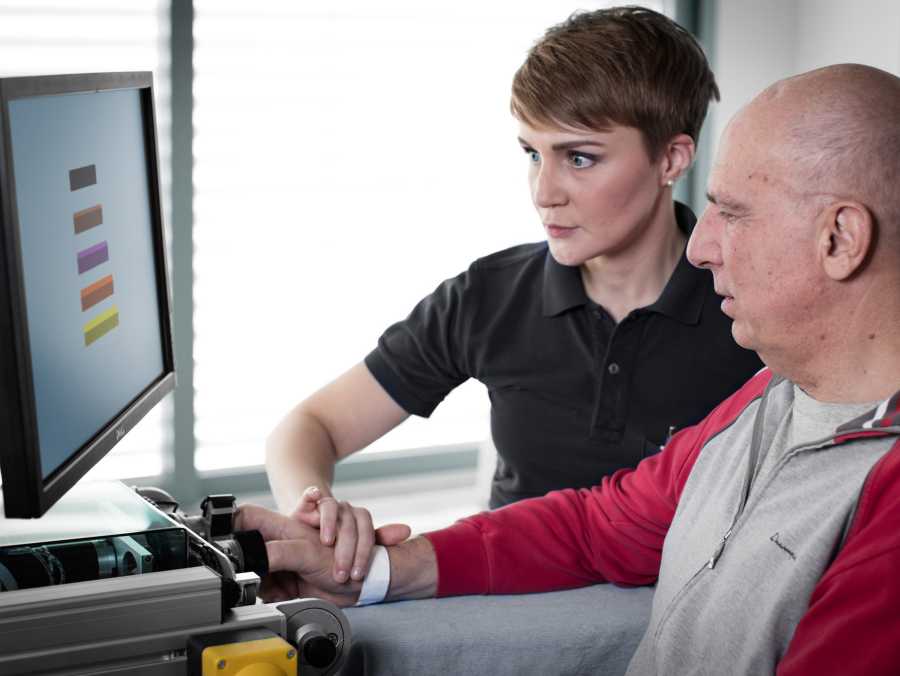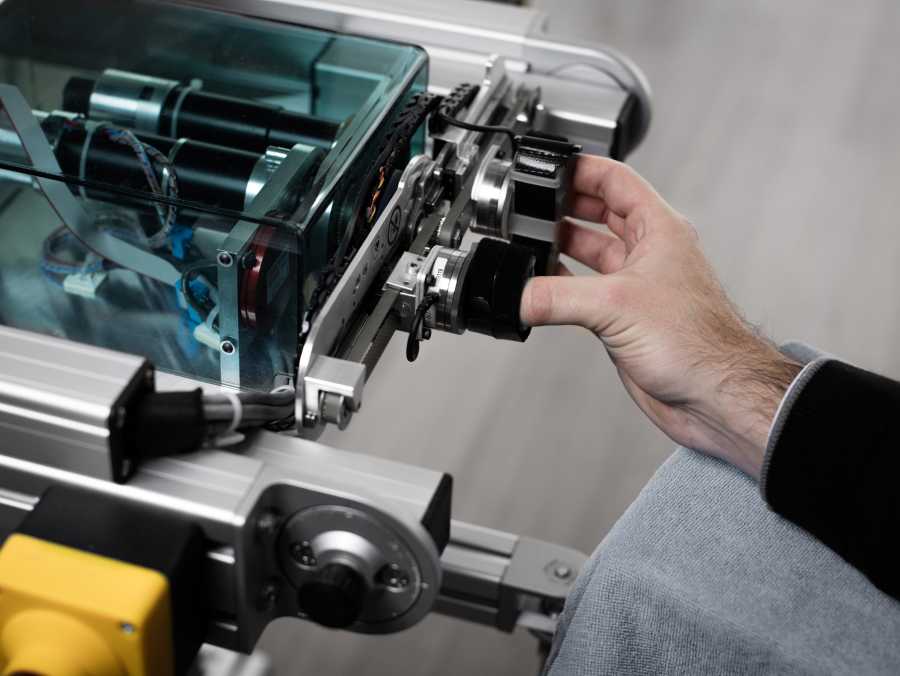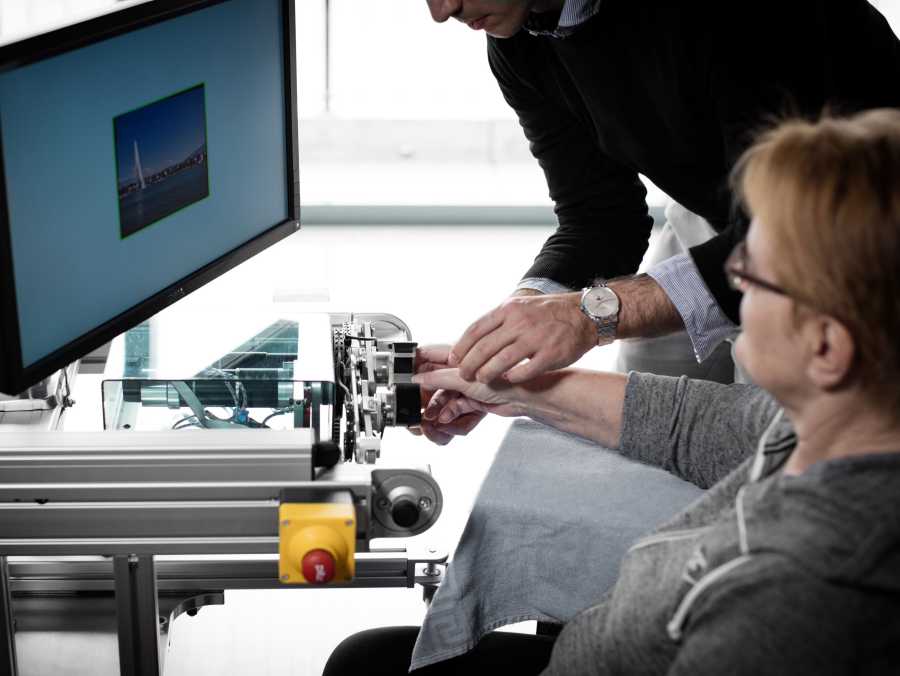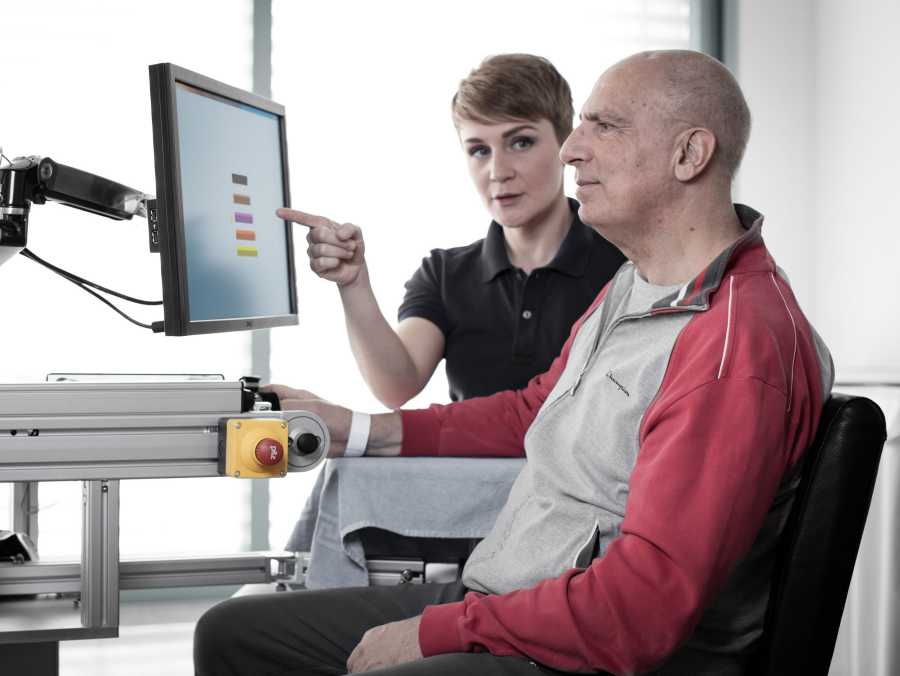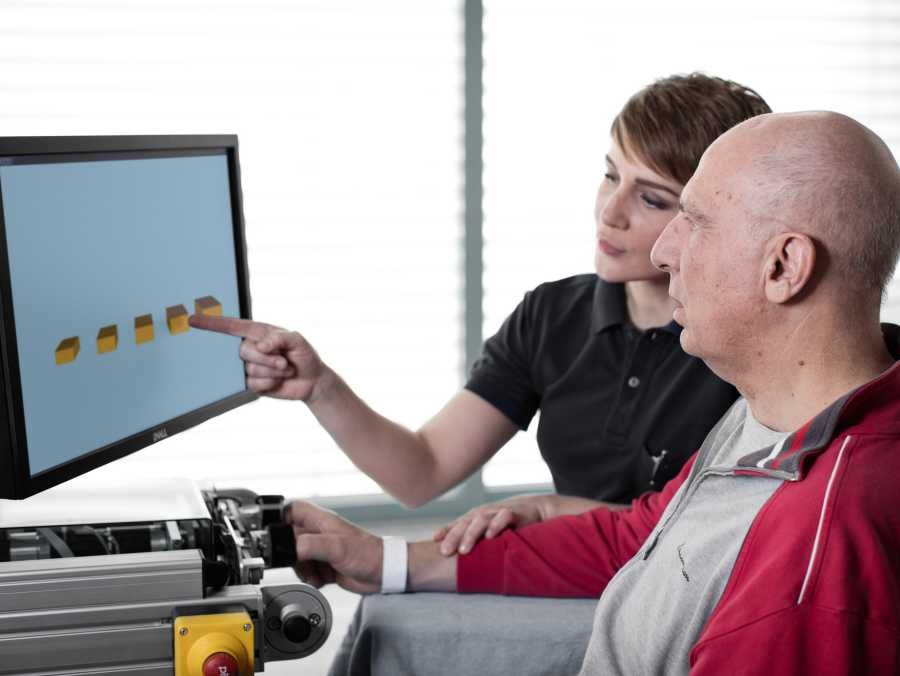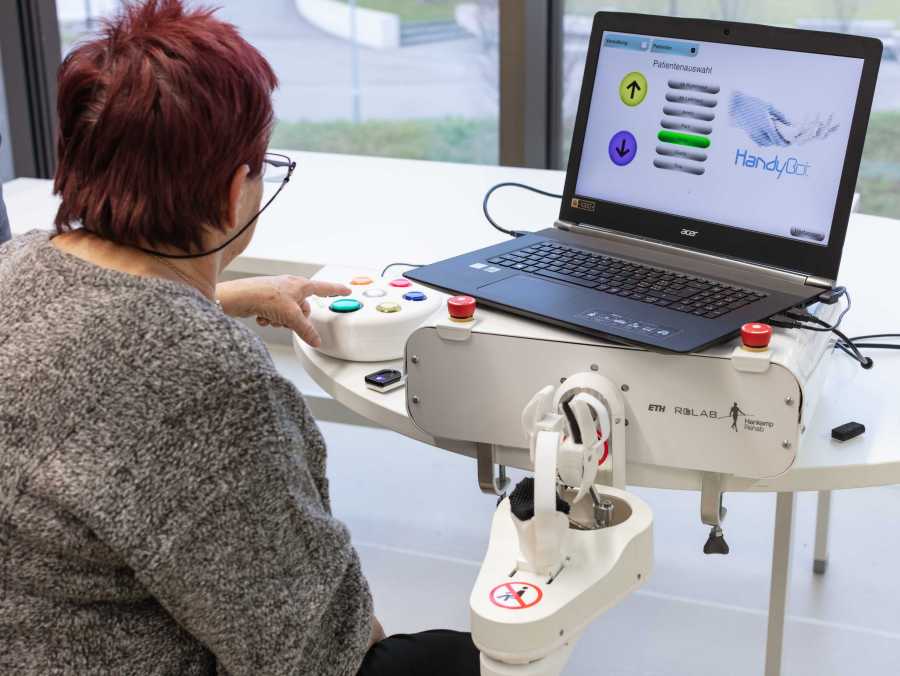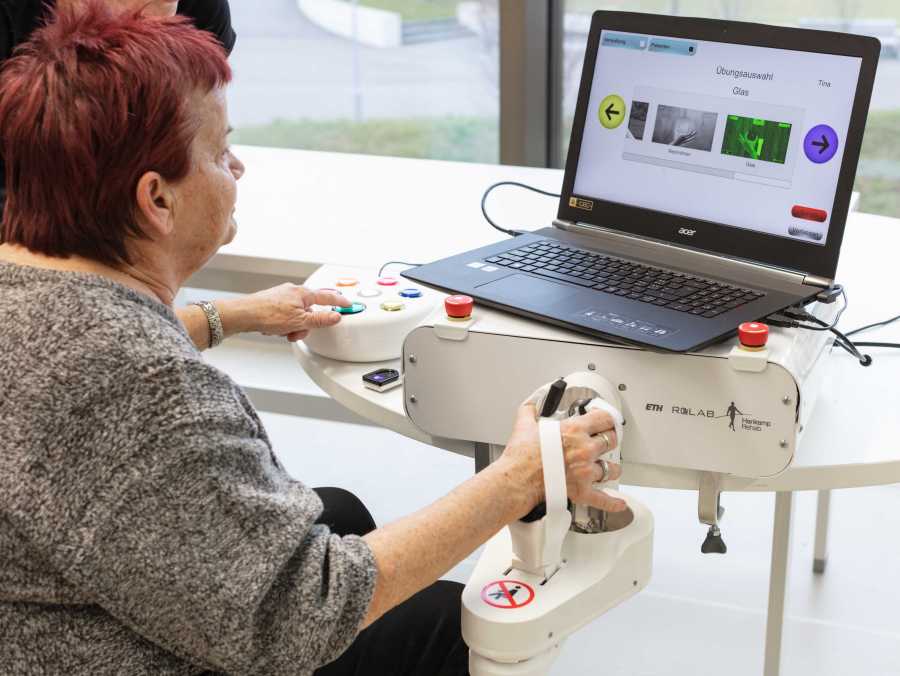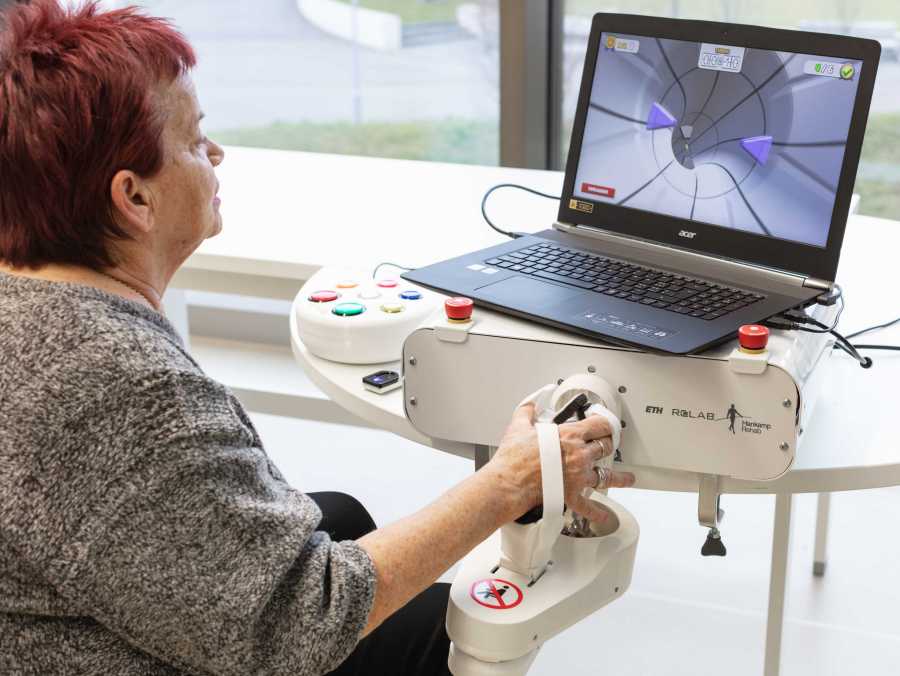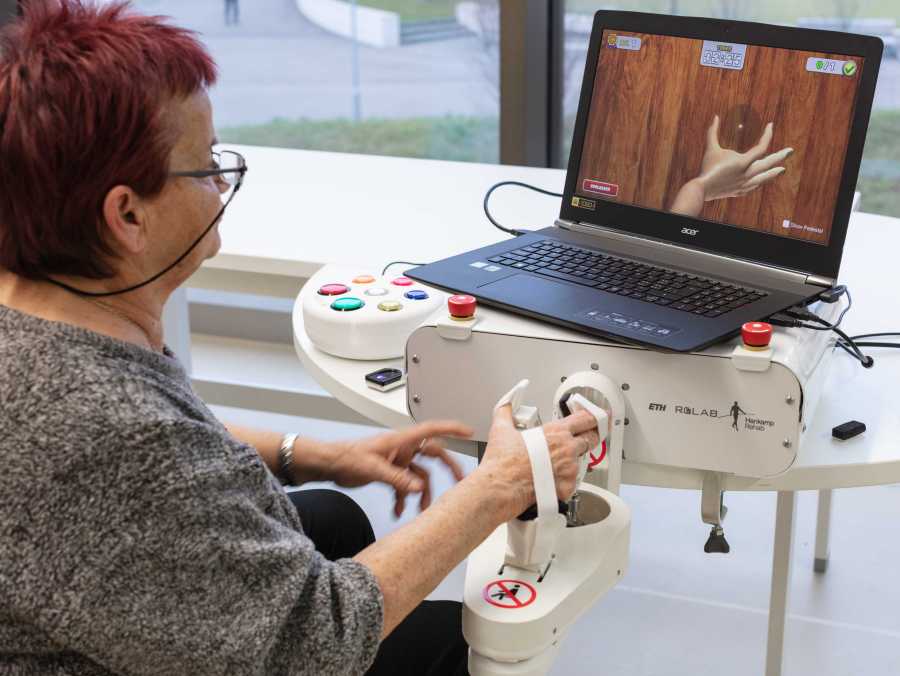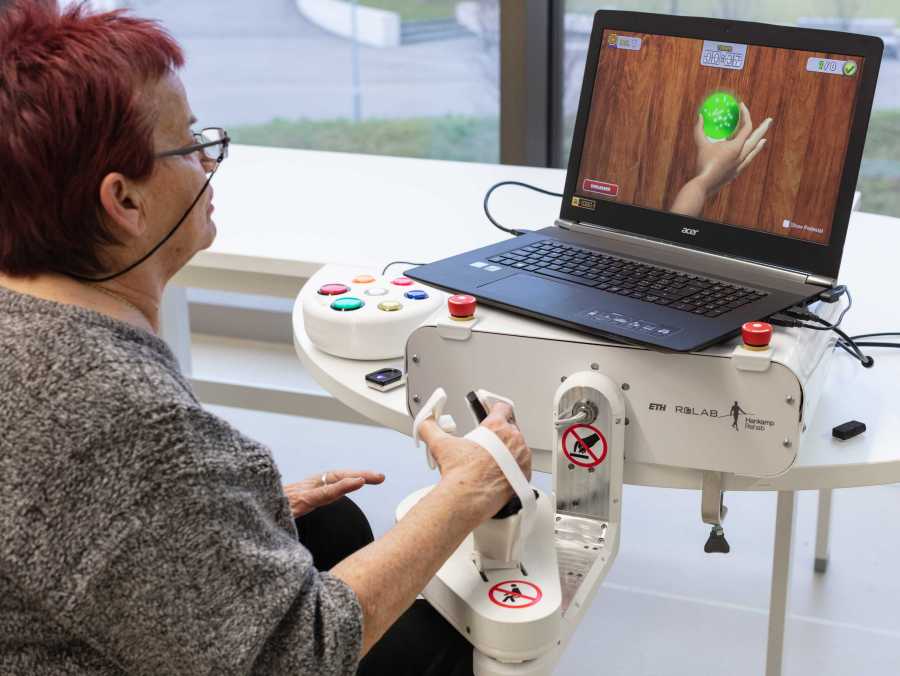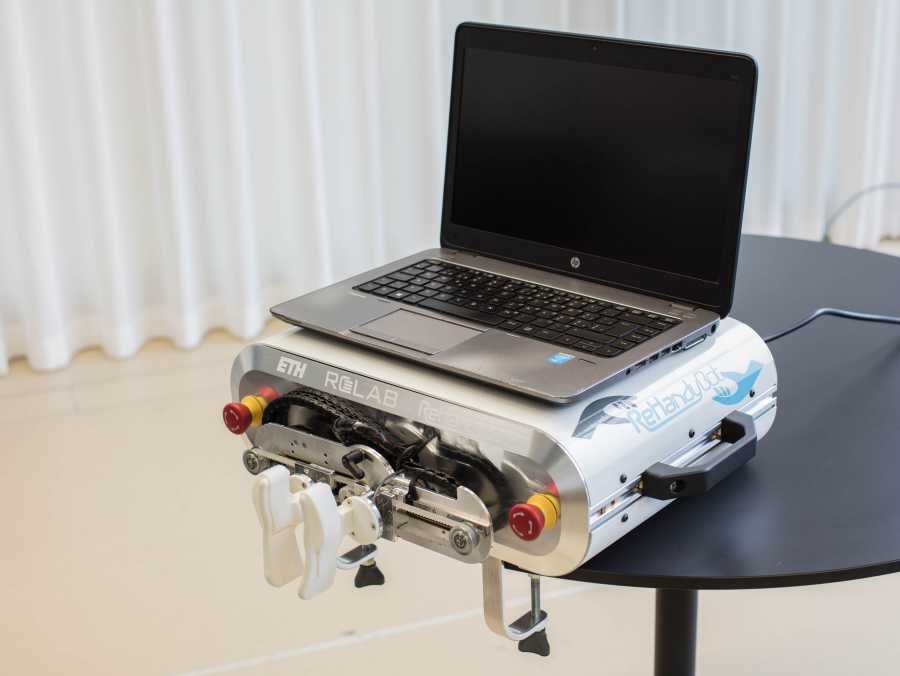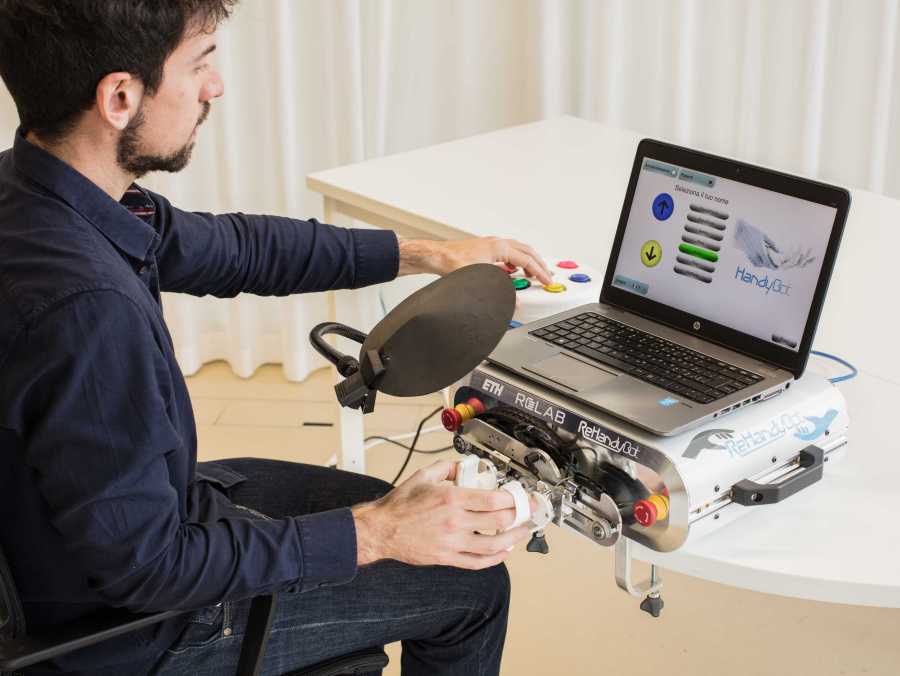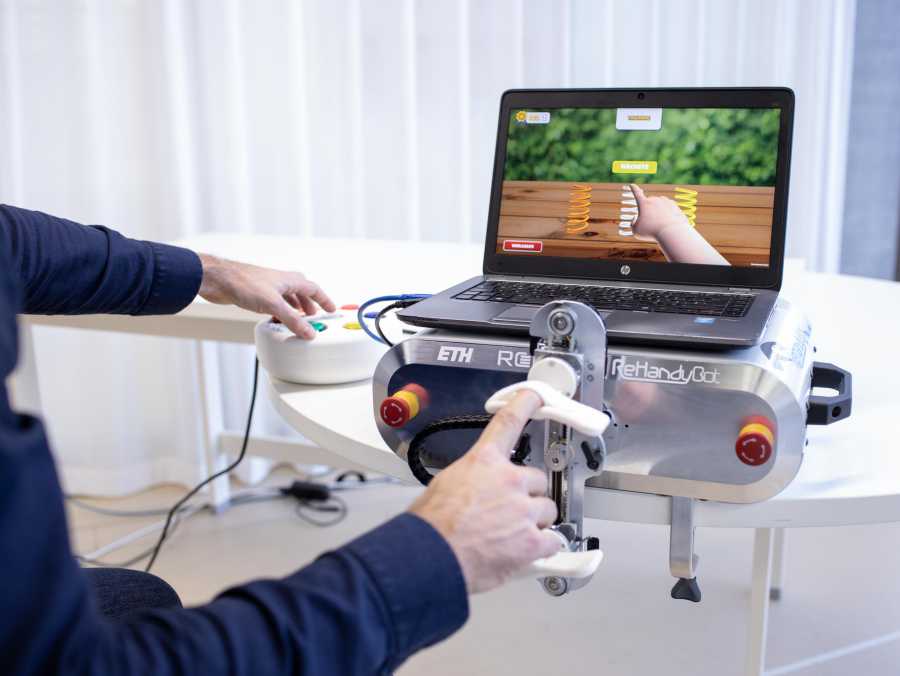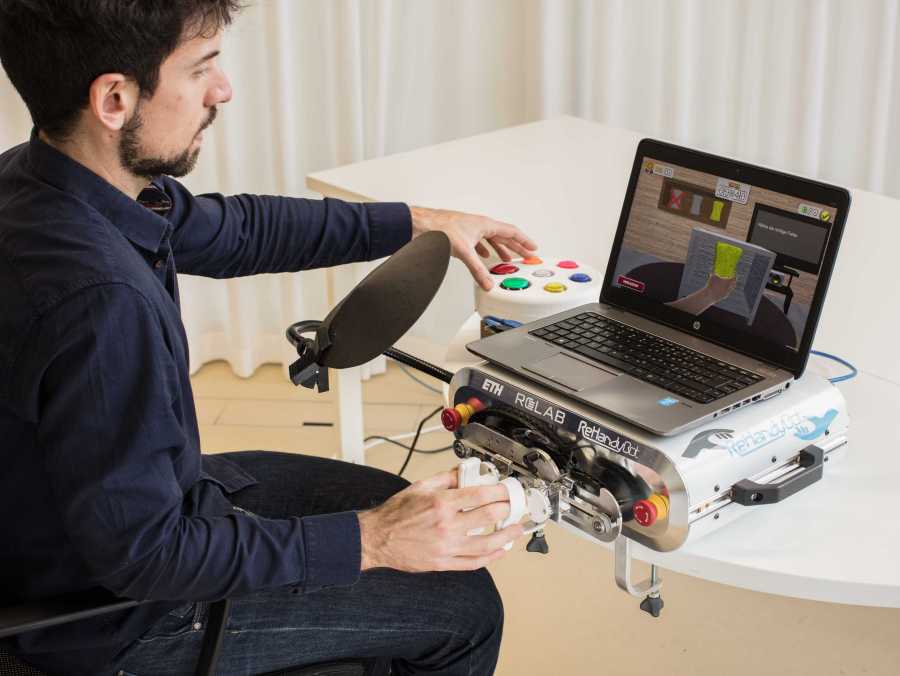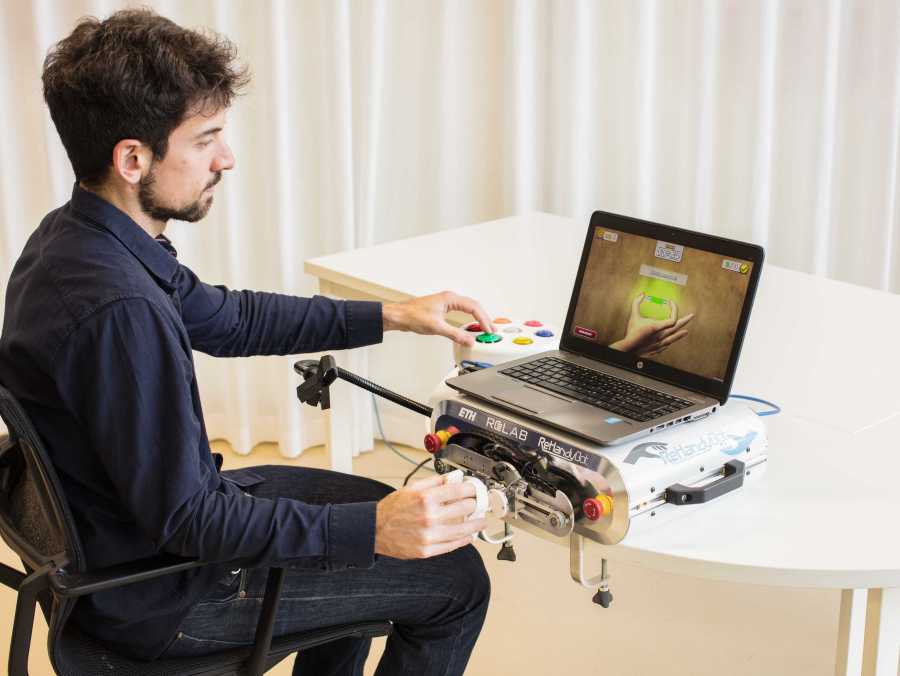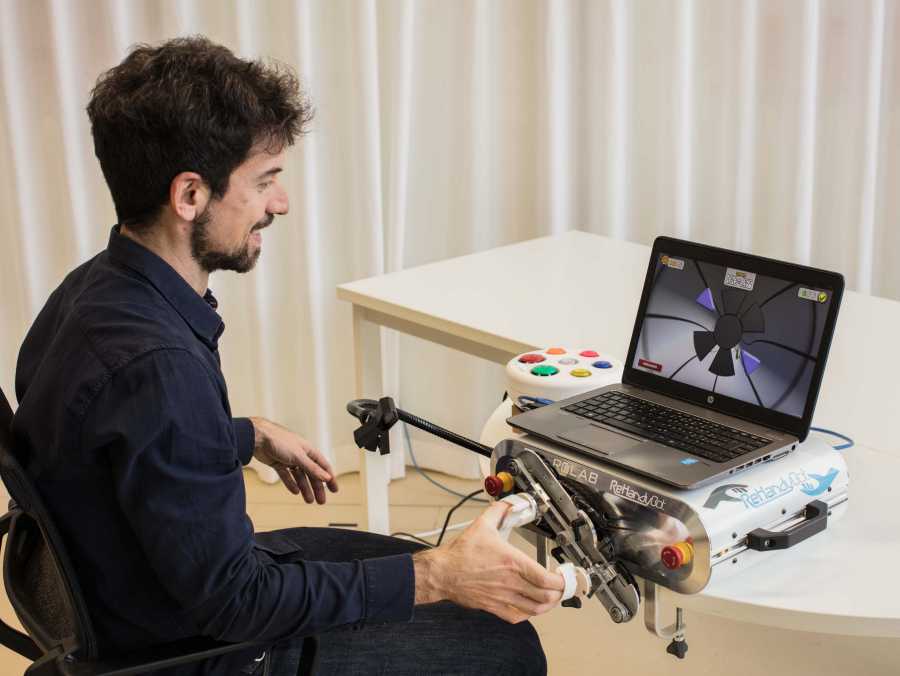Robot-Assisted Rehabilitation and Assessment of Hand Function
Stroke survivors suffering from hand impairment are often severely limited in the execution of activities of daily living. We are developing and clinically evaluating robotic devices to train and assess motor and sensory hand/forearm function. These systems can complement conventional therapy, and allow for unsupervised rehabilitation in the clinic and at home.
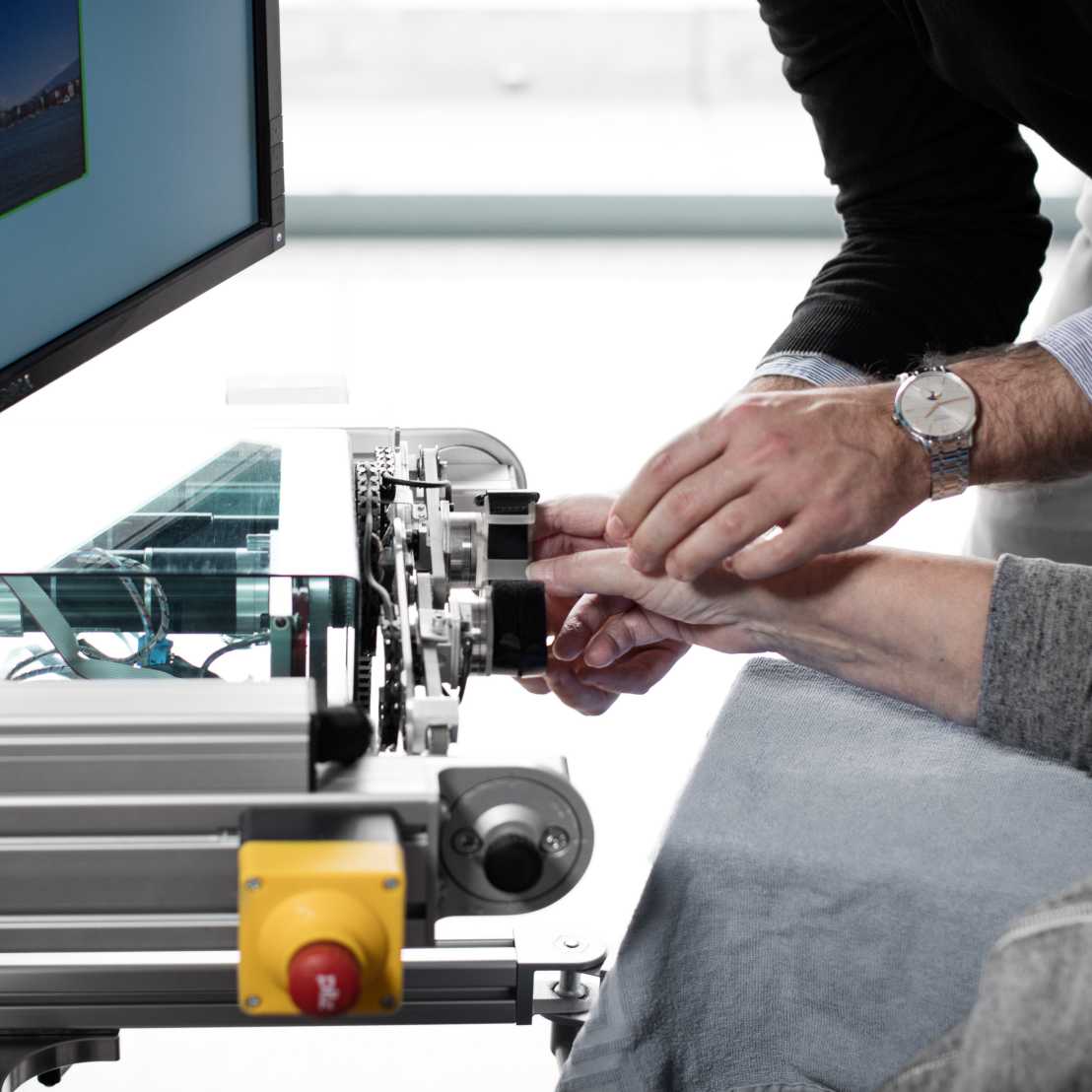
We use our arms and hands to achieve most activities of daily living. People suffering from functional deficits of the upper limb following a stroke or other neurological disorders are often severely limited in the execution of activities of daily living. Conventional therapy to regain sensorimotor function can be complemented with robotic devices, which allow to increase the intensity and dose of treatment offered to patients, provide objective measures to assess functional improvements, and use these assessments to automatically adapt type and difficulty of therapy exercises.
This line of research builds on prior developments carried out in collaboration with the National University of Singapore. There, the HapticKnob (HK), a 2 degree-of-freedom (DOF) robot was designed to train grasping as well as forearm pronation/supination (Lambercy et al., 2007). In a clinical study with chronic stroke patients, significant improvement in upper limb motor function was observed after a 6-week intervention with the HK, suggesting that robot-assisted training of distal segments of the upper limb contributes to restoring arm and hand function, and leads to homogeneous improvement of arm and hand function (Lambercy et al., 2011).
An improved version of the HapticKnob, the ReHapticKnob (RHK), was subsequently developed at the Rehabilitation Engineering Laboratory. The RHK allows training of the same hand/arm functions as the HK (Metzger et al., 2011), but offers a number of improvements in terms of its haptic performance and assessment capabilities. The RHK can render a wider range of impedances (Z-Width) thanks to an improved design concept and state of the art interaction control algorithms. The RHK can render different virtual objects with high haptic fidelity (Lambercy et al., 2015; Metzger et al., 2012). Several exercises based on the neurocognitive therapy concept have been implemented to train and assess motor and sensory function in stroke survivors (Metzger et al., 2014). A randomized controlled trial with 27 subacute stroke inpatients demonstrated that assessment-driven robot-assisted therapy with the RHK leads to non-inferior recovery compared to dose-matched conventional care (Ranzani and Lambercy et al., 2020). The RHK therapy platform (i.e., a haptic device to train hand and forearmfunction, a patient-centered user interface and a battery of therapy exercises and assessments) has been recently redesigned to be usable with minimal therapist supervision (Ranzani et al, 2021), with the aim to potentially enable a therapy dose increase in addition to conventional therapy sessions. The feasibility of minimally-supervised robot-assisted care with the RHK is currently under investigation in a new clinical trial in collaboration with the Clinica Hildebrand Centro di Riabilitazione Brissago, Switzerland.
More recently, two new portable table-top haptic devices called HandyBot and ReHandyBot were developed, with the aim to further promote an increase in therapy dose through a continuum of care. In this view, patients could learn how to use the therapy platform in the clinic with progressively less supervision, and continue to use it independently at home. HandyBot and ReHandyBot can be embedded in the same therapy platform used for the RHK and allow the training of the same DOF (plus an additional DOF for wrist flexion-extension in the case of HandyBot). The two devices are currently undergoing usability evaluations.
HandyBot
ReHandyBot
Funding
- ETH Zurich
- Swiss National Science Foundation through the National Center of Competence in Neural Plasticity and Repair (NCCR Neuro)
- Olga-Mayenfisch Foundation

